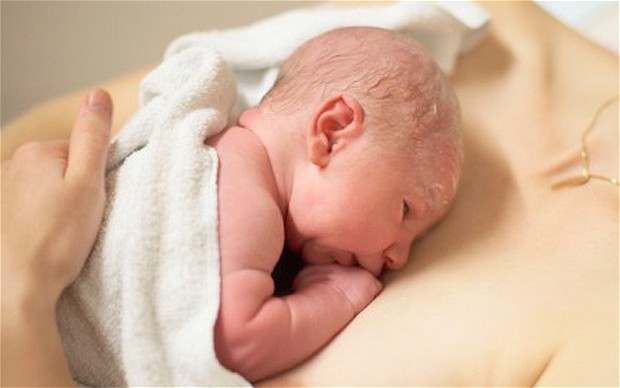Rebel Wylie | Kidspot | June 2015
While caesarean and vaginal deliveries are both associated with well-known risks, researchers have found a link between caesarean deliveries and long-term child chronic disease.
 Caesarean deliveries have been responsible for saving the lives millions of mothers and babies during child birth. So successful has caesarean delivery become, for many every day Australians, it is the birthing method of choice over vaginal delivery.
Caesarean deliveries have been responsible for saving the lives millions of mothers and babies during child birth. So successful has caesarean delivery become, for many every day Australians, it is the birthing method of choice over vaginal delivery.
The World Health Organisation (WHO) advises that caesarean rates in any country should account for no more than 10-15 percent of all births. And yet in Australia, the current caesarean rate of 32.3 percent is among the highest in the world.
A new study Caesarean births supports the WHO’s stance on reducing the high number of ‘medically unnecessary’ caesareans with its findings that caesarean births can result in much higher risks of chronic illness for children later in life.
As a mum to four caesarean bubs, I’m always interested in reading about whether their delivery will have any impact on their future health. My third child has had a few respiratory issues since birth that have been linked by doctors – but all of the others, so far, have been pictures of health.
However, their glowing medical rap sheets actually go against the data, it would seem.
C-sections are linked to poor health and long term chronic disease
The study, published in the British Medical Journal, saw researchers extensively review data on newborns delivered by C-section that included observational studies and clinical trials. They’ve found that caesarean babies are actually more likely to develop chronic diseases later in life, such as obesity, asthma and diabetes.
“It’s clear that caesarean-born children have worse health, but further research is needed to establish whether it is the caesarean that causes disease, or whether other factors are at play,” Dr Jan Blustein, study co-author, says in a press release.
According to researchers, this evidence warrants concerns that caesareans may lead to worse long-term child health and that this should be mentioned in clinical guidelines - the official documents that are used to educate doctors and midwives.
“It takes a while for research findings to reach clinicians and patients,” says Dr Blustein. “This research isn’t widely known. It is time for that to change, so that doctors, midwives and patients can weigh the risks and benefits of elective caesarean and decide accordingly.”
When might you have a caesarean?
There are certainly times when a C-section are completely necessary. They might include:
Planned caesarean
In many cases, caesareans are planned during the pregnancy and may be the result of the following:
- The baby is in breech (bottom first), or transverse (sideways) position.
- The baby has a known abnormality or illness
- There are multiple babies
- The mother has placenta praevia (when the placenta is so low in the uterus that it blocks the baby’s exit for a vaginal birth)
- The mother has abruption placenta (when the placenta has separated from the wall of the uterus and the foetus is in distress or danger)
- The mother has had previous caesarean births
Unplanned caesarean
Sometimes, the caesarean isn’t planned but, at some point during the labour, a decision to have a surgical delivery is made. This may happen for the following reason:
- Monitoring of the baby indicates its heart rate is irregular and may not be able to go through the stress of a vaginal delivery.
- If the umbilical cord has prolapsed, making it more likely to cut off the baby’s oxygen supply during delivery.
- The baby is not progressing down the birth canal as expected.
Did you have a caesarean? Have their been any complications or long term effects on your child’s health that might be linked?

